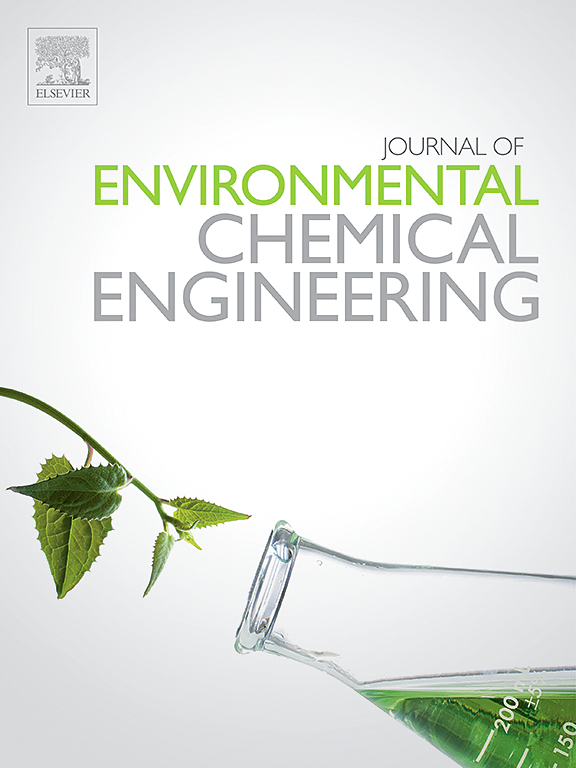膜分离天然气中氦的研究进展
IF 7.4
2区 工程技术
Q1 ENGINEERING, CHEMICAL
引用次数: 0
摘要
氦气是一种重要的稀有气体,具有重要的工业和科学用途,随着其资源耗尽,需求正在激增。仅在2020年,每年的氦气使用量就达到3万吨,相当于10亿美元的市场价值。天然气仍然是氦的主要来源,其浓度范围为0.3 %至1.9 % mol。随着氦的重要性日益增加,膜基气体分离技术,如金属有机框架(MOFs)和纳米复合膜因其低成本和多功能性而受到欢迎。本文综述了氦分离膜技术的现状,重点介绍了最近的研究和发表趋势。值得注意的是,基于膜的方法呈现出持续的上升趋势,特别是在2020年和2021年。然而,对选择性和渗透性的关注仍然存在。未来的研究应该集中在增强混合基质膜和新的制造技术上,以解决这些限制,并以可持续的方式满足不断扩大的工业需求。将基于膜的氦气分离技术整合到综合气体处理系统中,有可能提高操作效率,减少对环境的影响,并增加经济可行性。本文旨在为膜分离氦的研究提供有益的见解,并指导未来可持续氦供应和利用的改进。本文章由计算机程序翻译,如有差异,请以英文原文为准。
Review of helium separation from natural gas by membranes
Helium, an essential noble gas with important industrial and scientific applications, is seeing a surge in demand as its resources deplete. In 2020 alone, yearly helium use was 30,000 tons, comparable to a market value of USD 1 billion. Natural gas remains the primary source of helium, with concentrations ranging from 0.3 % to 1.9 % mol. With the increasing importance of helium, membrane-based gas separation technologies such as metal–organic frameworks (MOFs) and nanocomposite membranes have gained popularity due to their low cost and versatility. This review examines the present state of membrane technology for helium separation, focusing on recent research and publication trends. Notably, membrane-based approaches show a constant upward trend, with a special emphasis on the years 2020 and 2021. However, concerns with selectivity and permeability persist. Future research should focus on reinforced mixed matrix membranes and new fabrication techniques to address these limits and meet expanding industrial demands in a sustainable manner. The incorporation of membrane-based helium separation technologies into comprehensive gas processing systems has the potential to improve operational efficiency, reduce environmental impact, and increase economic viability. This review seeks to provide useful insights into the topic of helium separation by membranes, as well as to guide future improvements for sustainable helium supply and utilization.
求助全文
通过发布文献求助,成功后即可免费获取论文全文。
去求助
来源期刊

Journal of Environmental Chemical Engineering
Environmental Science-Pollution
CiteScore
11.40
自引率
6.50%
发文量
2017
审稿时长
27 days
期刊介绍:
The Journal of Environmental Chemical Engineering (JECE) serves as a platform for the dissemination of original and innovative research focusing on the advancement of environmentally-friendly, sustainable technologies. JECE emphasizes the transition towards a carbon-neutral circular economy and a self-sufficient bio-based economy. Topics covered include soil, water, wastewater, and air decontamination; pollution monitoring, prevention, and control; advanced analytics, sensors, impact and risk assessment methodologies in environmental chemical engineering; resource recovery (water, nutrients, materials, energy); industrial ecology; valorization of waste streams; waste management (including e-waste); climate-water-energy-food nexus; novel materials for environmental, chemical, and energy applications; sustainability and environmental safety; water digitalization, water data science, and machine learning; process integration and intensification; recent developments in green chemistry for synthesis, catalysis, and energy; and original research on contaminants of emerging concern, persistent chemicals, and priority substances, including microplastics, nanoplastics, nanomaterials, micropollutants, antimicrobial resistance genes, and emerging pathogens (viruses, bacteria, parasites) of environmental significance.
 求助内容:
求助内容: 应助结果提醒方式:
应助结果提醒方式:


